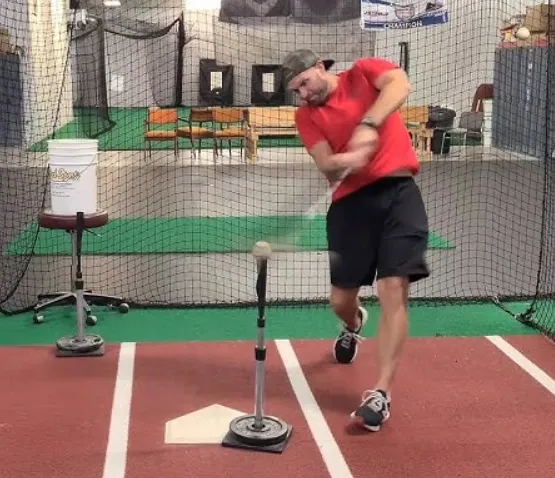One of the most important skills for any hitter is the ability to handle inside pitches. While many coaches emphasize pulling the ball, they often leave out the details on how to actually execute this correctly. So, how do you make the most of an inside pitch and avoid the common mistakes that can turn a potential line drive into a ground-out?
Here are three practical tips for hitting the inside pitch, along with common mistakes to watch out for.
Common Mistakes to Avoid When Hitting the Inside Pitch
Before diving into the tips, let’s explore a few common mistakes that can derail your swing when facing an inside pitch.
Mistake #1: Too Much Weight on the Back Leg
One of the most frequent errors players make when hitting inside pitches is placing too much weight on the back leg. This often leads to “spinning off” the ball, where you rotate instead of driving through it. When this happens, the contact point ends up too far out in front, which typically results in ground balls or sharply hooked line drives.
What You Should Do:
Ensure that your weight distribution is balanced 50/50 between the front and back legs as you begin to rotate. Maintaining an upright posture helps you rotate more easily, allowing you to square up the ball more consistently.
Mistake #2: Failing to Rotate the Back Leg Fully
Another common issue is not fully rotating the back leg. This makes the swing path longer, which is problematic when hitting inside pitches because you need to make quicker contact, often with the ball positioned farther in front of you. Without proper rotation, your swing will lack fluidity, and you may struggle to make solid contact.
What You Should Do:
Focus on clearing your back hip by rotating fully through the ball. This allows your hands to stay tight to your body and move directly through the pitch, rather than around it. By attacking the ball in this way, you’ll generate backspin and avoid a hooking spin, allowing you to drive the ball more effectively.
Mistake #3: Not Using the Legs to Drive Through the Ball
When facing an inside pitch, many hitters make the mistake of not using their legs enough. The key to hitting an inside pitch is to maintain the same swing mechanics as you would for any pitch, with one important adjustment: your path needs to be shorter and quicker.
What You Should Do:
Use your legs to power your swing in a straight line to the ball. A firm front leg is crucial for this. If your front heel opens up too early, it causes your whole front side to open up, which leads to a slower, more circular swing path. Instead, keep your front side closed and focus on driving through the ball with your back hip.
Putting It All Together
While many pitchers will attack the outer half of the plate, when they make a mistake on the inside, you need to capitalize. By applying these three tips, you’ll develop a shorter, quicker swing that allows you to handle inside pitches with confidence. With practice, you’ll turn those pulled ground balls into line drives in the pull gap, and your overall hitting ability will improve significantly.












